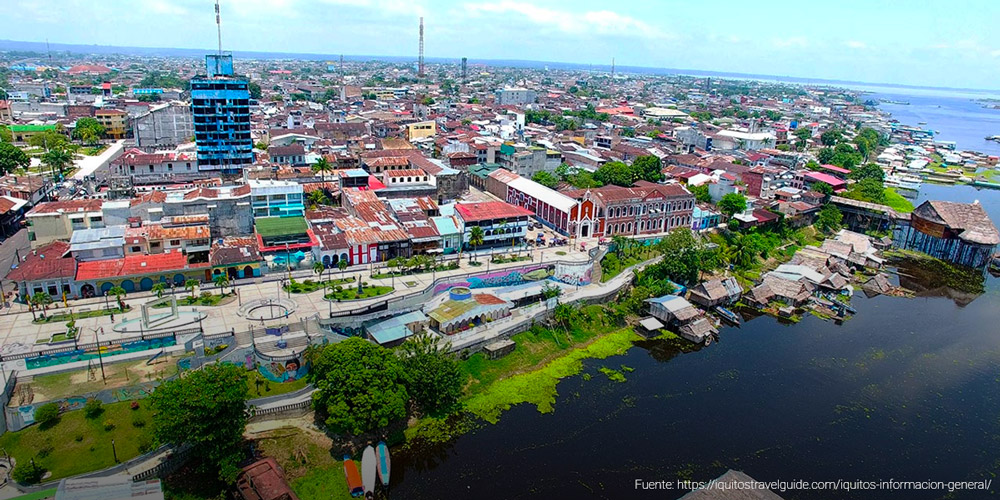
Iquitos: Towards a Sustainable Electricity Supply
Por: Olga Andrea Ramirez Bernardo.¹
Iquitos is one of the most representative and important cities in Peru, has an electrical demand of 40 to 60 MW, and is the largest and most important isolated electrical system in the country.
Currently, Iquitos maintains a single power generation system: The Iquitos Thermal Power Plant ². This motivates us to ask ourselves why Iquitos, having natural resources available and necessary for clean and renewable electricity generation, still does not have RER ³ generation systems.
Many have been the efforts of the State to take Iquitos towards RER generation, remember the mega project “Mazan Hydroelectric Power Plant” ⁴ and its 220kV Transmission Line, which was fed from the damming of the Napo River and the diversion of its flow through a diversion to the Amazon River. ⁵

Although the Mazán Project promised to supply electricity to the entire demand of Iquitos, it never materialized due to problems with the approval of the EIA and the sustainability of the project itself.
Initially, a small hydroelectric plant of 15 to 25 MW was projected, later it was indicated that it would be of 544 MW and that it would serve not only Iquitos but would also be interconnected to the SEIN to derive there the excess megawatts that Iquitos would not use, that is, 494 MW that would serve other parts of the country.
In short, the plant would produce much more than what local demand requires.
On the other hand, the large infrastructure of the projected power plant and its associated costs made the project unfeasible from a financial point of view, given its low profitability.
Another case is the “220 kV Moyobamba – Iquitos Transmission Line and Associated Substations”. This project was intended to finally connect Iquitos to the SEIN; however, the route of this line was established through the Pastaza Fan ⁶, the largest wetland complex in the Peruvian Amazon.
On the other hand, the company sought to develop energy through another source: solar energy. In this regard, in 2012, Electro Oriente issued a call for consulting services for the implementation of a photovoltaic power plant. This is now a reality since, in 2021, Electro Oriente signed a PPA contract with three energy generators: the French multinational EDF, which will be in charge of supplying solar energy to the cities of Iquitos and Requena; the British company Aggregko, which will do the same for Nauta; and the Peruvian company Nobu Solar, which will supply the towns of Caballococha, El Estrecho, and Tamshiyacu. In this way, Iquitos will become the first city in Peru to have a solar energy power supply. ⁷
The aim of all these projects is for Iquitos to put an end to its dependence on fossil fuels since the city has one of the largest rivers in the world: the Napo and the Amazon, as well as high levels of solar radiation.
Large-scale projects, such as the Mazán power plant, which could benefit not only Iquitos but also many other places with growing demands in the country, encounter barriers in the environmental and social components.

From our more than 30 years of experience in the design of electrical projects and in the management of the socio-environmental component, we can affirm that large-scale projects in complex ecological environments are feasible with adequate environmental and social management. This means that, from the engineering design, the management plans and programs of the environmental management instruments must be realistic, accurate, and adequate for the specific environment where they will be located.
An example of this is the large hydroelectric power plant of Belo Monte on the Xingu River – in the middle of the Brazilian Amazon, as well as the kilometers of transmission line of XRTE (Xingu-Rio Transmisora de Energia), among others. It must be taken into account that, transversely, projects, under a sustainability perspective, must keep harmony and profitability for the companies, the environment, and society.
¹ Lawyer from the University of Lima, Specialist in Electricity Law – PEPSA TECSULT.
² With an effective power of 60.7 MW, which met a demand of 50.4 MW. In that sense to meet the growing demand for electricity, in 2013 the Ministry of Energy and Mines awarded the Brazilian Company GENRENT DO BRASIL LTDA, to build, operate and maintain a thermoelectric generation plant that will replace the Iquitos Thermal Power Plant with more modern, efficient and clean technology. Gestión – Economía (November 28, 2017). Gestión. Retrieved from https://gestion.pe/economia/mem-nueva-termoelectrica-iquitos-beneficiara-energia-422-000-personas-219678
³ Renewable Energy Resources.
⁴ In 2012, through the Forty-fifth Final Complementary Provision of Law No. 29812, Public Sector Budget Law for Fiscal Year 2012, the Regional Government of Loreto approved the incorporation of the referred Project which includes its “Mazan Iquitos Transmission Line in 220 KV”. Moises, P. C. (February 29, 2012). Pro & Contra. Retrieved from https://proycontra.com.pe/central-hidroelectrica-de-mazan/
⁵ In May of the same year, the Lahmeyer International GMBH-Lahmeyer Agua y Energía S.A. Consortium was awarded the contract to prepare the technical file for the Mazan Hydroelectric Power Plant for an amount of almost S/. 15 million. The investment foreseen for the construction of the Mazan hydroelectric power plant was to be US$ 998 million. Merzthal Toranzo, J. (August 31, 2021). Esan Connection. Retrieved from https://www.esan.edu.pe/conexion-esan/estrategia-energetica-iquitos
⁶ Wetland complex of 3 million 800 thousand hectares of extension recognized since 2002 as a Ramsar site, that is, a wetland of global importance since it concentrates a great biodiversity. Praely Sierra, I. (December 8, 2017). Mongabay. Retrieved from https://es.mongabay.com/2017/12/polemico-proyecto-electricidad-amenaza-sitio-ramsar-peru/
⁷ Stakeholders Sustainability. (12/27/2021). Stakeholders Sustainability. Retrieved from https://stakeholders.com.pe/medio-ambiente/cambio-climatico/iquitos-sera-la-primera-ciudad-de-peru-en-funcionar-con-energia-solar/

